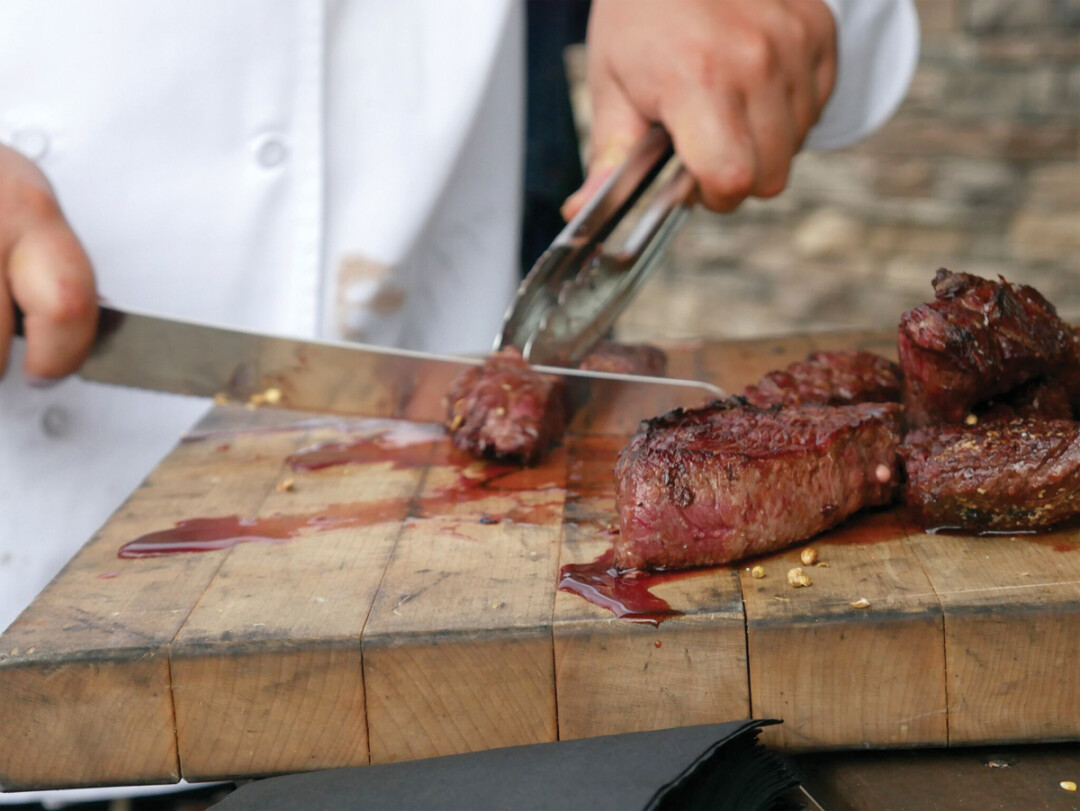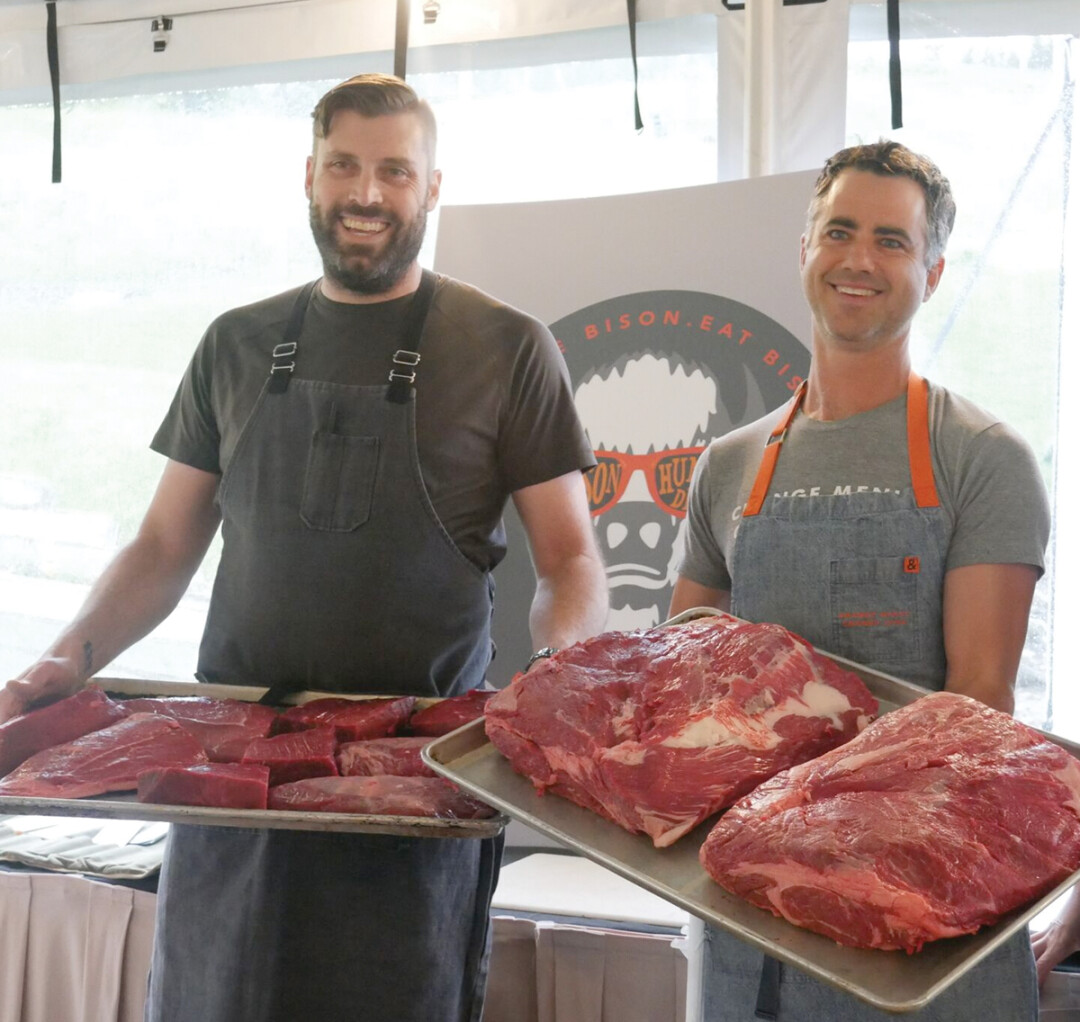Beyond the Grind: What Do You Know About Eating Bison?
Cassi Miller | Friday Sep. 1st, 2017
Ask yourself that question: What do you really know about eating bison? I know that bison burgers taste fantastic. I know it’s a leaner meat than beef. That is about the extent of my knowledge. I never considered the world of possibility that existed out there when it comes to eating bison. 
I had my eyes opened wide to those possibilities when I had the chance to attend the International Bison Conference that was held in Big Sky in July. Of particular interest to me was the “Beyond the Grind” cooking demo that included three unique panel participants there to discuss bison, cooking, and how ranchers could help educate consumers on all the delicious options they have when it comes to bison. The first panel participant was Jessie Price. Jessie is the editor of EatingWell magazine, a publication that prides itself on 25 years of recipes and science-based journalism. Jessie got her start as a recipe tester at EatingWell and eventually made her way up through the ranks, experiencing a variety of food along the way.
The second panelist was Adam Danforth. To call him simply a butcher would be to do him a great disserve. Within the first five minutes of hearing him speak, I’d learned more about cutting and the treatment of meat than I ever had before in my life. The man knows his stuff. Author of two award-winning books, one with a forward from Temple Grandin, about butchery, specifically humane methodology, Danforth is a force of meat knowledge to be reckoned with.
The final panelist was Kyle Mendenhall. He is the head chef at Arcana restaurant in Boulder, Colorado. This is an establishment and a team with a unique mission. Calling themselves an American restaurant, they work to define what it actually means to carry that label. What is American? What is American food? Mendenhall’s contribution to that mission is a focus on food through a combination of regionality, historical preservation, and delicious ingredients.
As I followed a crowd of ranchers and farmers into a big, white tent at Big Sky Resort, I really didn’t know what to expect. It was a sea of ball caps, jeans, and embroidered jackets proudly displaying logos and names of the ranches. I saw a cluster of people from New Hampshire and overheard a man speaking with an Australian accent, which surprised me. I later learned there were over 600 people attending the conference this year and they represented all 50 states and 10 foreign countries at this 4-day event. Featuring discussions and speakers on a variety of bison-related issues, including the announcement that the National Bison Association was hoping to grow the North American bison herd to 1 million head by 2027, this particular cooking demo was in high demand, with chairs full and people huddled around the edges of the tent hoping to glimpse the knife and cooking acrobatics. 
The theme of this demo, and what seemed to be a mantra for everyone there, was “eat it to save it.” In other words, by creating interest in eating bison on a national and even global scale, more will have to be bred and herd sizes will increase, saving the animal from any kind of disappearance. It’s a not a new concept, but it’s one bison producers believe in passionately. So, how do you do this for bison? How do you create interest? In recent years, producers and chefs had luck with bison burgers. Now a staple on many restaurant menus in the Northwest, bison has become synonymous with places like Montana, Wyoming, and South Dakota. But, what’s beyond ground bison? What else lies out there that consumers don’t have a clue about? It turns out quite a bit.
That’s where EatingWell Magazine could help. With 1 million subscribers and 4 million readers, it could help bison producers really shed light on the possibilities of their meat. Price remarked that eight years ago, the magazine ran an article on a bison short rib recipe, and comments and questions skyrocketed. People loved it. What’s more, they love the message of bison. With eating habits changing, people really want to know where their food is coming from and how it’s grown or raised. People are also becoming more adventurous, often trying unique dishes and new things, being more willing to step outside traditional food boundaries than ever before. They don’t just want to experience that at a restaurant though. They want to bring new dishes, fresh new ideas and foods into their home and experience them for themselves. But, who can help people experience bison in their home kitchens?
A butcher. A butcher with a wealth of knowledge and understanding of cuts of meat, like Danforth. Education is the key to getting people access to bison and helping them understand how it can benefit the eating habits of their families. Danforth emphasized the story of bison as an educational stepping stone. It is the American bison story. It hadn’t always been a pretty relationship. As he put it, we often first destroy everything we’re obsessed with. But, there’s a heritage in what’s now known as the official national mammal, thanks to the work of the National Bison Association in 2016. That heritage and those stories begin with the producers and how they manage their herds. They can tell interested consumers the stories of care and feeding of their animals, giving them the background they so crave about the meat they’re eating. This isn’t questionable meat from some no-name corporation. This is homesteads, whole families, American-born heritage helping raise an honest, quality product.
Consumers can also be enticed by the health factor. Bison is leaner than beef and contains many healthy fats people look for in a daily diet. This, I learned, allows you to control the fat rendering as you cook and also control the flavor in your meat.
This educational element to bison has unfortunately received a slow exposure in the market. Aside from ground meat, what do other cuts look like? What does it mean to have a multimuscle cut? What do those cuts look like individually? Bison can actually be broken down into a variety of cuts and used for dishes beyond the burger, like lifter meat, a small specialty cut, being used to make bison fajitas or using rib-eye to make medallions. Bison fat can even be rendered down to make tallow products like soap and lotion. The possibilities really are endless and people don’t realize that.
Keeping focused on the food though, Chef Mendenhall emphasized ways to connect that story to the process of creating recipes. The history of bison is intertwined with the history of our nation, and that can be interpreted in such wonderful ways in a plate of food. At Arcana, they often look for stories and historical recipes to feature on their menu, making their creation process rather unique in the landscape of other restaurants. One such dish is the sugar steak. While this marinade calls back to the history of the Old West, with many of the simple list of ingredients being easily accessible to camp cooks, a restaurant in Colorado called Bastien’s has had one on the menu since 1936, which has actually given them the slogan “Home of the Sugar Steak.” A variety of spices can be added, but the base of the recipe is 2 parts sugar to 1 part salt. Mendenhall includes garlic and turmeric in his sugar steak marinade. The salt elements of this recipe work as a tenderizer, drawing out moisture from the meat, and the sugar caramelizes, giving this marinade a teriyaki-esque flavor. By using it on bison, which is naturally sweet, you enhance the flavors for a truly pleasing dining experience. His second preparation demonstration was a bison tartar with an ancho chili sauce. This recipe calls to the locality of Colorado, which grows a fairly substantial crop of ancho chilis. Warm and bursting with flavor, this sauce could be used on a variety of dishes beyond tartar.
There’s so much to be done with bison meat that people really never get to experience. It can be smoked, cured, cut into steaks, braised, etc. The versatility of bison has to be presented to the consumer, as well as the different elements of flavor and cook in each cut of meat.
I walked away from the demo with four pages of notes and more new knowledge than could be contained in this single piece. But, I knew one thing for certain: I knew nothing about eating bison before that day. I was doing myself a great disservice staying confined to the bison burger. As a foodie and a home cook, I needed to explore. I could cook bison at home, in a variety of cuts, and become part of the bigger picture and history of eating in America. That’s something to say. So, if anyone knows where I can get my hands on cuts of bison beyond just ground meat, immediately let me know.
| Tweet |
